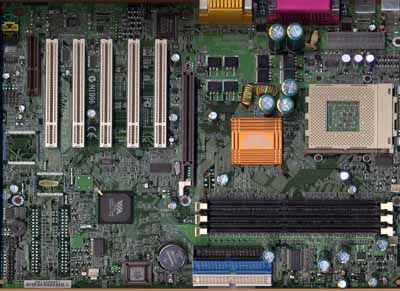VIA KT266 Socket-A DDR Chipset: Third time's a charm?
by Anand Lal Shimpi on April 10, 2001 3:44 AM EST- Posted in
- CPUs
The Board
One of the major reasons we conducted our latest Socket-A Chipset Comparison was because we had three different Socket-A chipsets on three different motherboards, all manufactured by the same company, ASUS. This helped eliminate a variable that is almost always present in such comparisons, because various manufacturers place different values on optimizing their designs and BIOSes for performance or stability, etc.
Unfortunately, ASUS has yet to produce a KT266 based motherboard and it is unlikely that they will currently because of the fact that they are pushing their A7A266, an ALi MAGiK1 based solution, as their AMD 760 alternative. Our only option was to use the MSI K7T266 Pro that isn't the best comparison we could make to three ASUS motherboards, but it's the best we can do with what we're currently dealing with.
However as we've seen in the past, MSI boards aren't too far away from the performance of their ASUS counterparts so you shouldn't expect to see too large of a performance gap simply because of board manufacturers.
The K7T266 Pro is an interesting board, we weren't too happy with the BIOS setup as MSI decided to use an AMIBIOS utility for the board instead of their usual AWARD setup. The AMI utility had some interesting quirks such as placing the clock multiplier and FSB adjustment functions underneath the Hardware Monitoring menu in the BIOS, but at least the board let's you adjust the clock multiplier unlike both of ASUS' DDR solutions.
Another BIOS complaint was that the current versions of the AMI DOS flash utility don't support the KT266 chipset and won't let you flash the BIOS of the board. That would normally be ok because MSI does have an on-line BIOS update utility known as Live BIOS, unfortunately the link to the updated BIOS in MSI's Live BIOS script was broken at the time of publication so we couldn't upgrade our first K7T266 Pro to the shipping BIOS revision. Luckily our friends over at NewEgg were able to send us a retail board that we used for our tests.
Other issues involved the system locking up under Windows 2000 when running SPECviewperf every now and then, as well as failure to POST after a warm reboot. The only solution to the warm reboot problem was to unplug the test bed and then cycle power that way. This seems to be a problem with a handful of MSI boards; although this is the first time we have been able to duplicate it in lab. Apparently quite a few of our readers have expressed complaints with issues that resemble this warm reboot/POST failure issue. We'll be in touch with MSI and we will work with them on a solution since we are finally able to duplicate it in the lab.











0 Comments
View All Comments